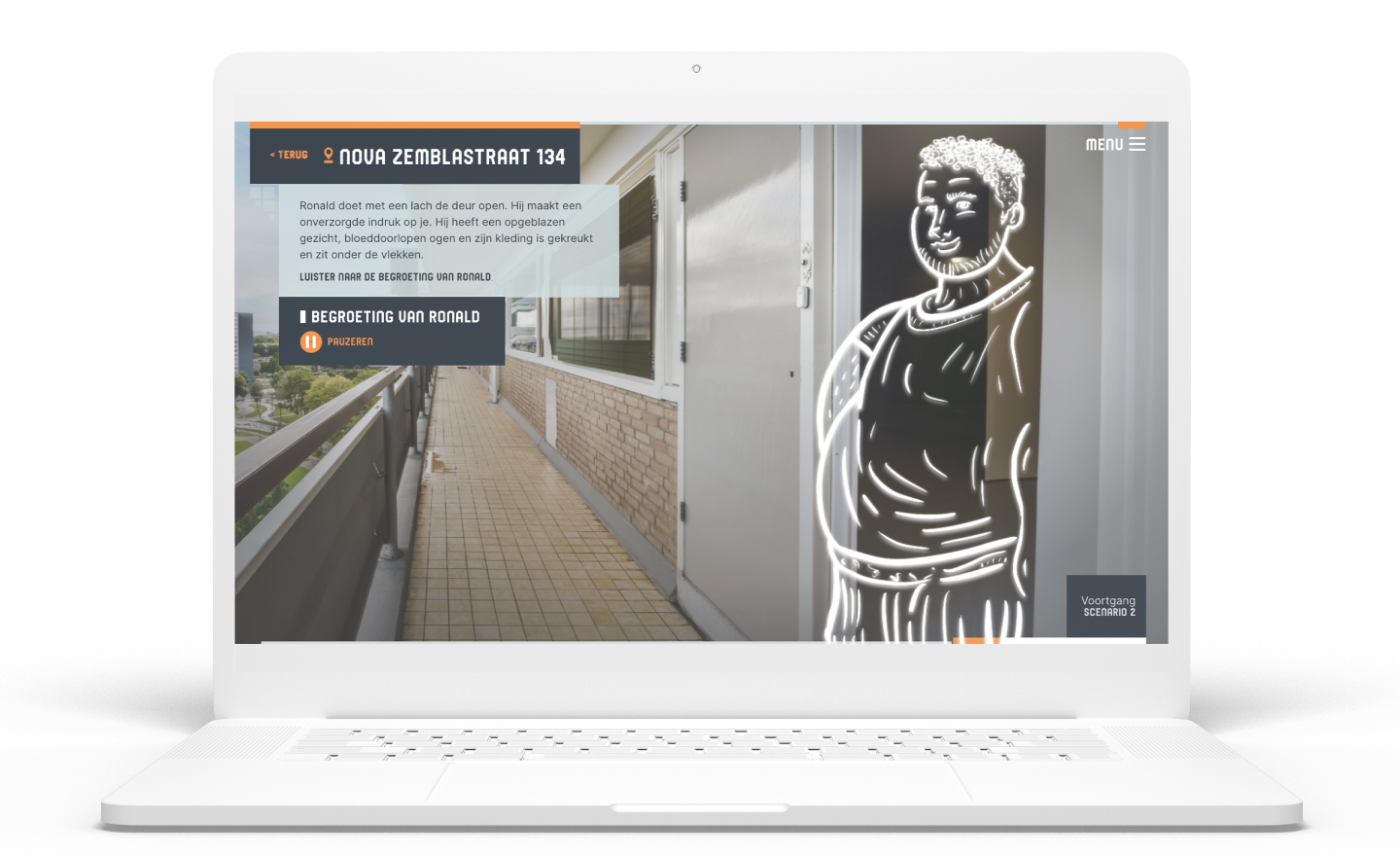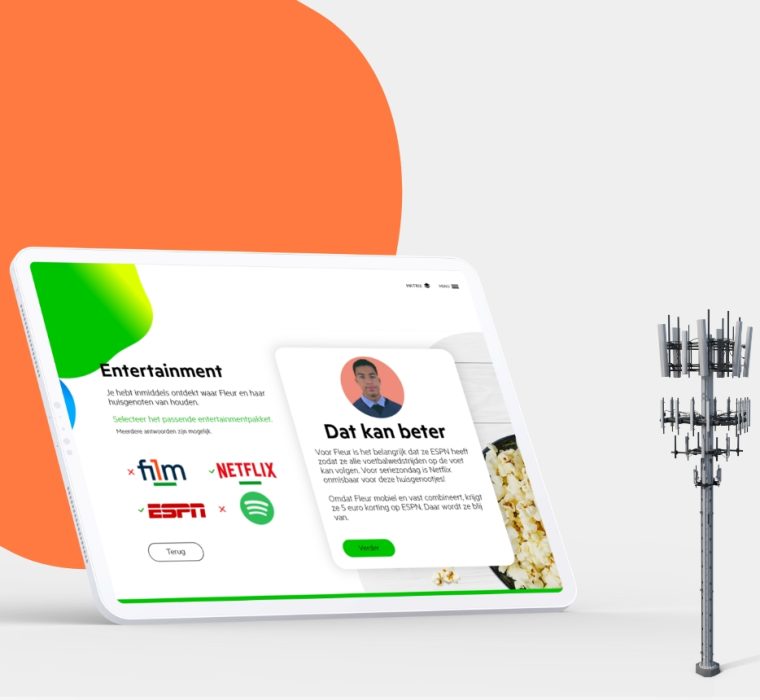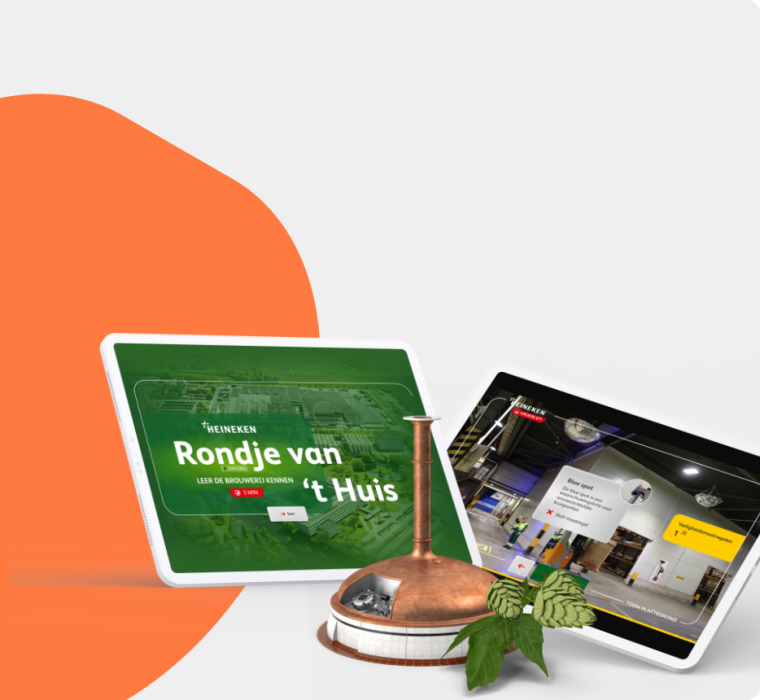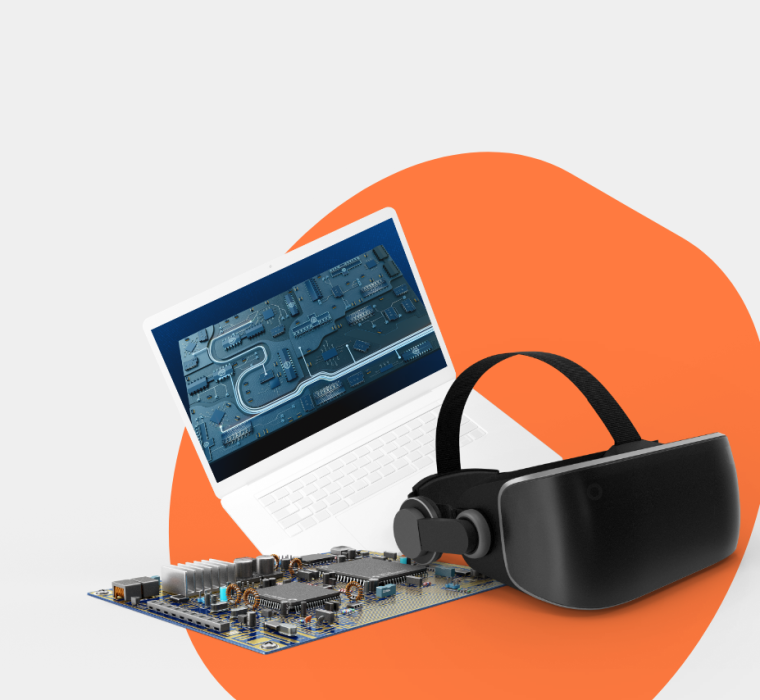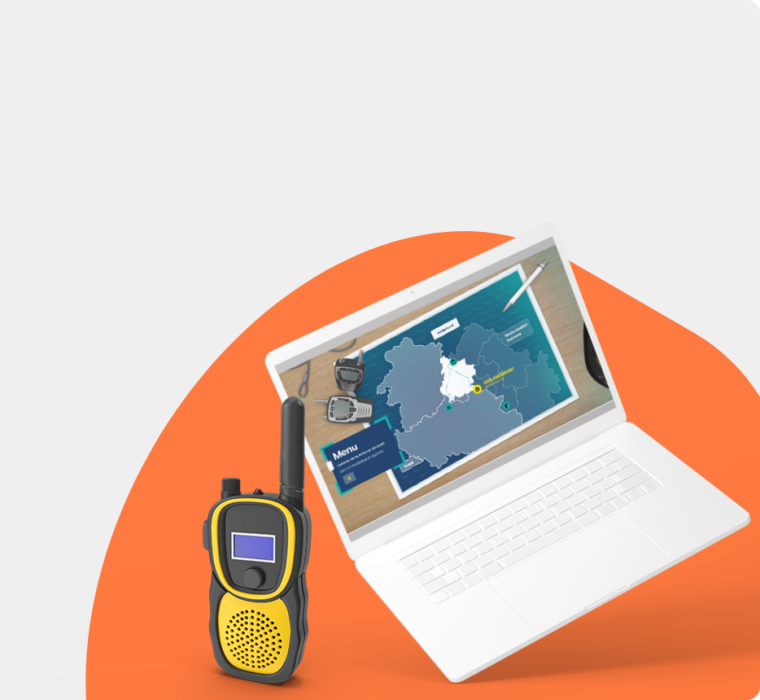Hands-on practice with complex behaviors
How can we make employees aware of their own behaviors in practice, and how can we raise their level of knowledge in an approachable way to match the increasing complexity of counseling? With that question, Hulp Bij Huishouden (HBH) in the Municipality of Amsterdam approached us.
Regular employees within the HBH increasingly work with people who have certain problems, but who do not (or no longer) qualify for (O)GGZ. Consider aging accompanied by cognitive decline, such as dementia. Or people struggling with mental health, addiction or psychosocial problems. This may cause their behavior to be/become complex. The target group’s level of knowledge does not always match what is needed to deal with these behaviors.
By developing an approachable, case-based learning solution, participants can practice complex situations in a hands-on, safe environment. Making mistakes in this regard is not a bad thing. Participants follow three sample scenarios centered around fictional, needy Amsterdam residents. They learn to recognize signals, become aware of their own actions and the impact they can make with them. The module can be taken individually or in groups, to encourage conversation, reflection and sharing of experiences.
Combination of photography and illustrations
To complete the three practice scenarios, we gathered input from the target audience itself. What signs of problems do they encounter in housekeeping assistance? And where are the potential bottlenecks or complexities? The visual style of the module is a combination of photographic style and illustrations. Because of the sensitivity of the subject, it is not desirable to use photos and names of “real” people. On the other hand, you want to provide the scenarios in the most realistic context possible. By combining photography and illustration, you can answer this.
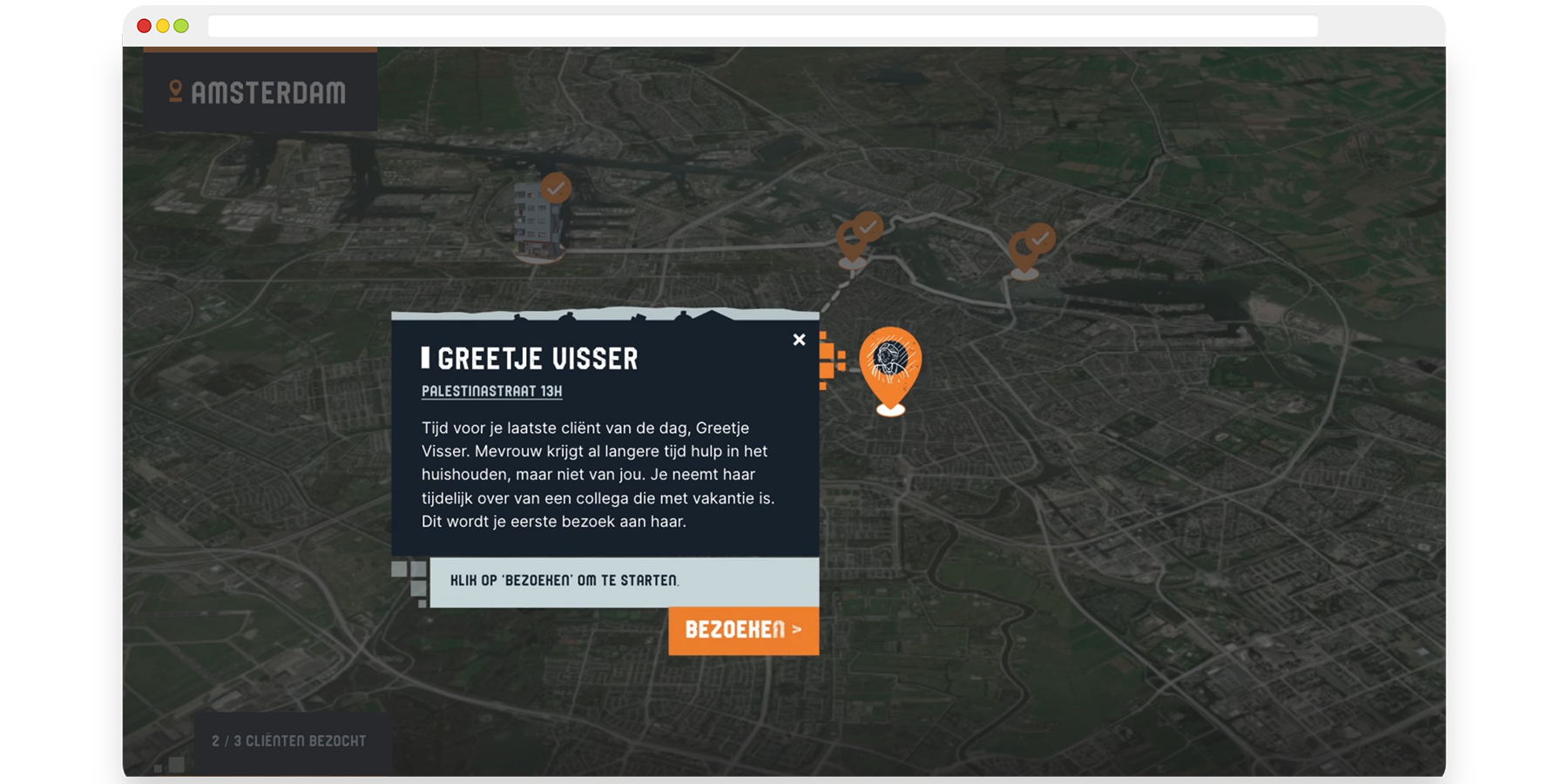
Custom sound design for extra experience
The Help with Household module includes a custom sound design. For example, personas have voices and non-content pages (such as the home page and menu) contain typical Amsterdam sounds, such as the famous streetcar signal. This custom sound design adds to the experience, bringing the learning solution to life and increasing motivation to learn.
Are you looking for ways to increase the knowledge level of your target audience? We like to think with you, who knows, we may have the solution! Please contact us, and we can talk about it sometime without obligation.

